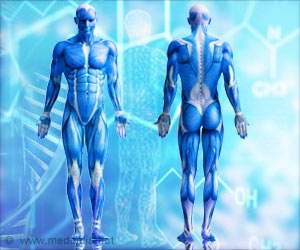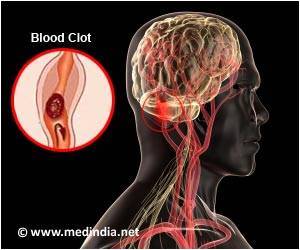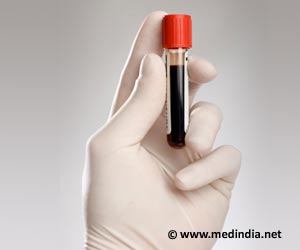Highlights
- Scientists discover new biomaterial to prevent uncontrolled bleeding.
- Shear-thinning biomaterial retains its shape inside the blood vessel and obstructs aneurysm and other forms of bleeding.
- Clinical trials in future can help to study the safety and efficacy of the biomaterial in humans.
A research team led by Ali Khademhosseini Ph.D., from Brigham and Women’s Hospital together along with Rahmi Oklu of Mayo Clinic has developed a deployable hydrogel which has a consistency similar to that of a toothpaste to prevent bleeding.
Shear thinning biomaterial was able to flow through the blood vessel using a catheter and was also found to obstruct the blood vessel or aneurysm (blood like bulge inside the blood vessel) without depending on the blood clot formation.
Scientists carried out various mechanical tests initially inside the lab to monitor if there were any changes in the shape of the shear-thinning biomaterial over time that needs optimization of certain properties before testing it on animal models.
The research team also tested the efficacy of shear-thinning biomaterial in rodent and porcine models since the blood vessels were found to be of similar dimensions like the human blood vessels.
"Our work thus far has been in the lab, but we are on a translational path to bring this new biomaterial for embolization to the clinic to improve patient care." he added.
Further clinical study on the biomaterial would help to know the safety and efficacy in humans.
Beneficial Properties of Shear-Thinning Biomaterial
Shear-Thinning Biomaterial has certain advantages which include
- Withstanding pressure inside the blood vessels
- Ability to remain at the injection site
- Degrade naturally over time
- Helps to block the blood vessel by attracting the cells to be deposited at the site of shear-thinning biomaterial
- Bleeding usually occurs when the blood cannot clot properly and may occur as a result of an injury, or medical conditions like ulcers (gastro-intestinal bleeding), cancers, urinary tract infections, aneurysm
- Bleeding or hemorrhage that occurs after an accident or injury is responsible for 35% of pre-hospital deaths
- Bleeding can occur either internally or externally depending on the type of the injury
- Serious bleeding can occur while taking blood-thinning medications like aspirin, warfarin
- Diabetes and other chronic condition patients often take more time to heal
- Bleeding can be prevented by avoiding falls
- Proper care has to be initiated while using sharp objects like knife or scissors
- Protect the skin from over drying or cracking
- Medicines like tranexamic acid are found to be effective in preventing bleeding
- Bleeding Disorders - (http://www.hematology.org/Patients/Bleeding.aspx)
- BLEEDING AND WOUNDS - (http://www.ct.gov/dds/lib/dds/factsheets/fs_bleeding_and_wounds.pdf)
- The Bleeding Facts! - (http://www.talkingred.org/bleeding-disorders)
- Hemorrhage - (http://www.nationaltraumainstitute.org/home/hemorrhage.html)
Source-Medindia












